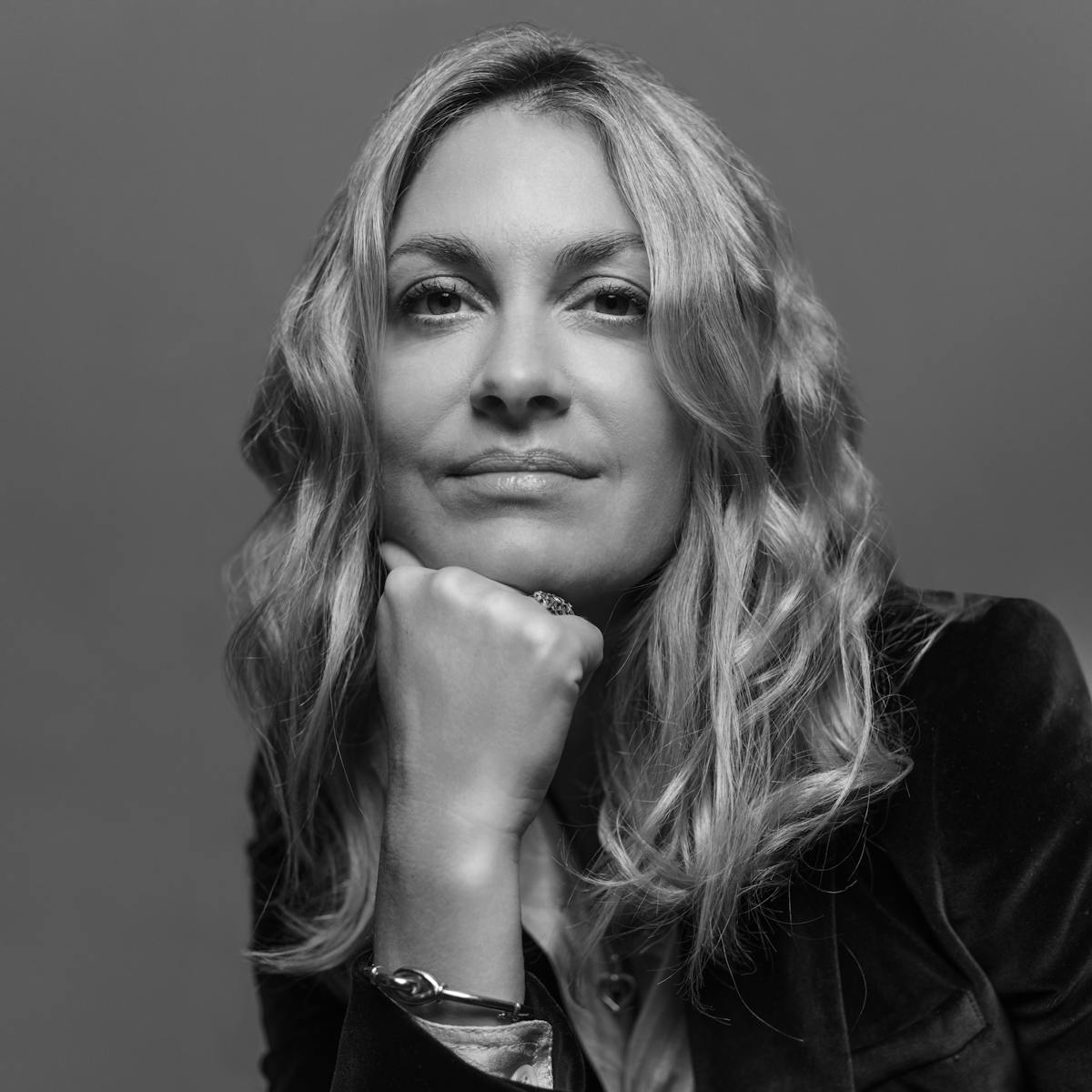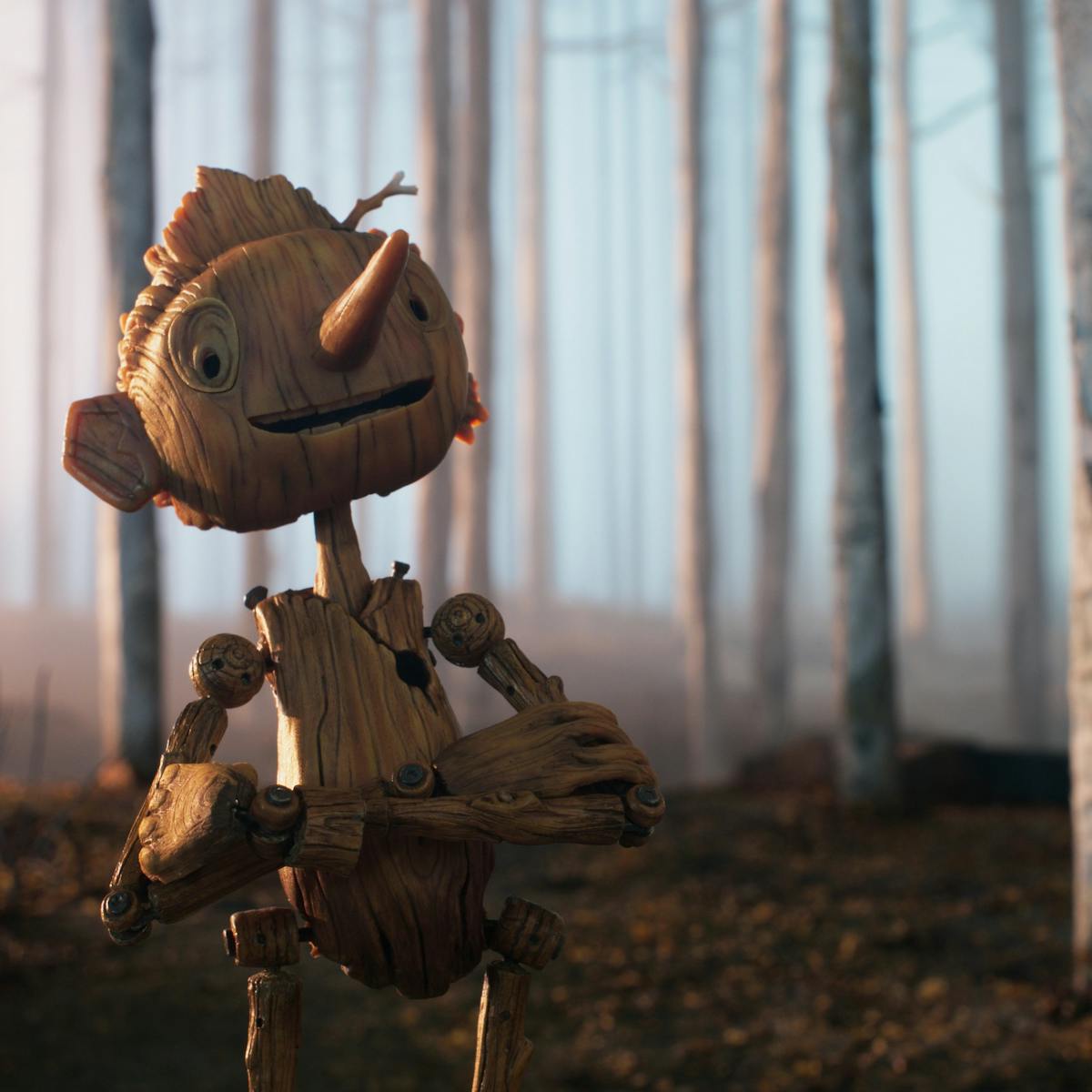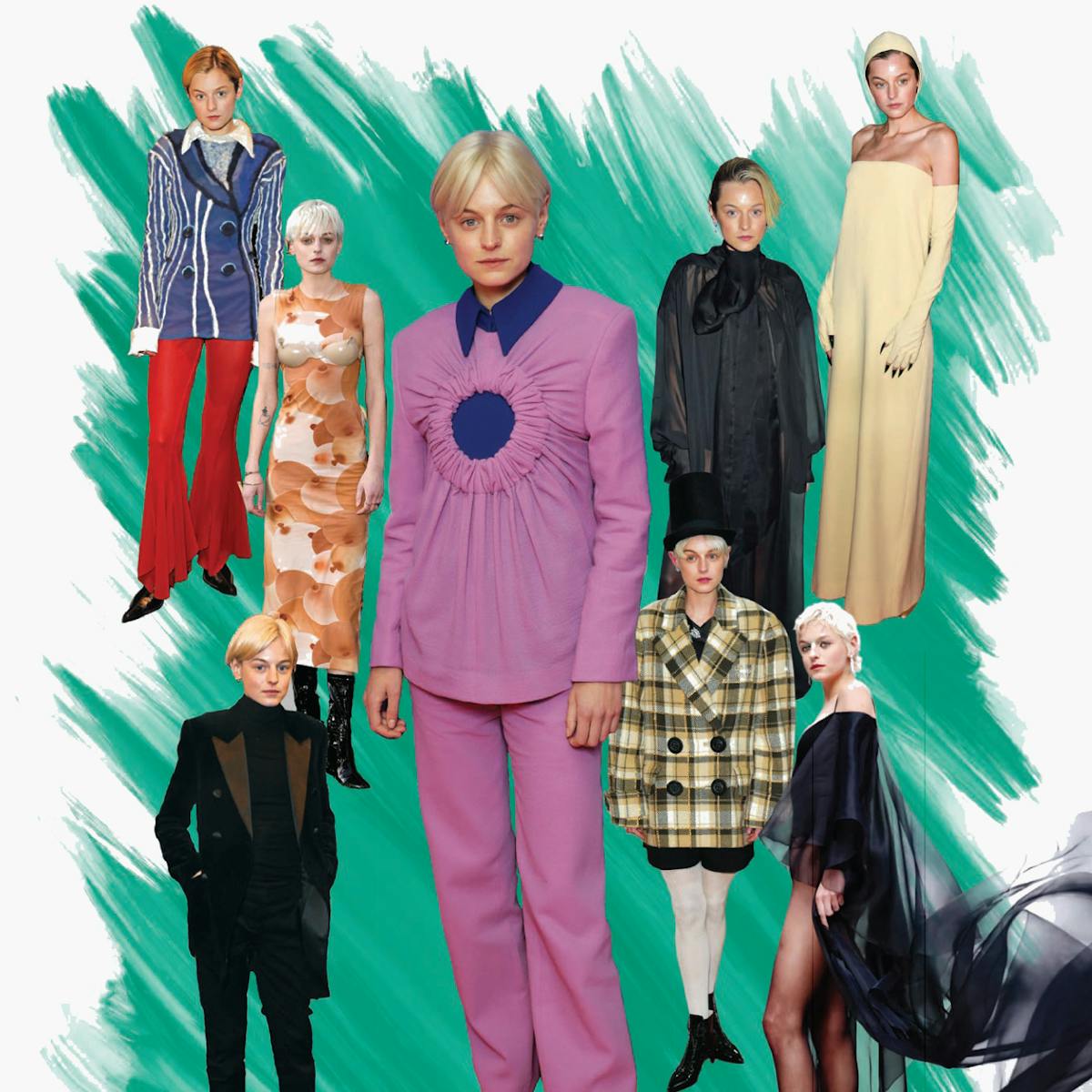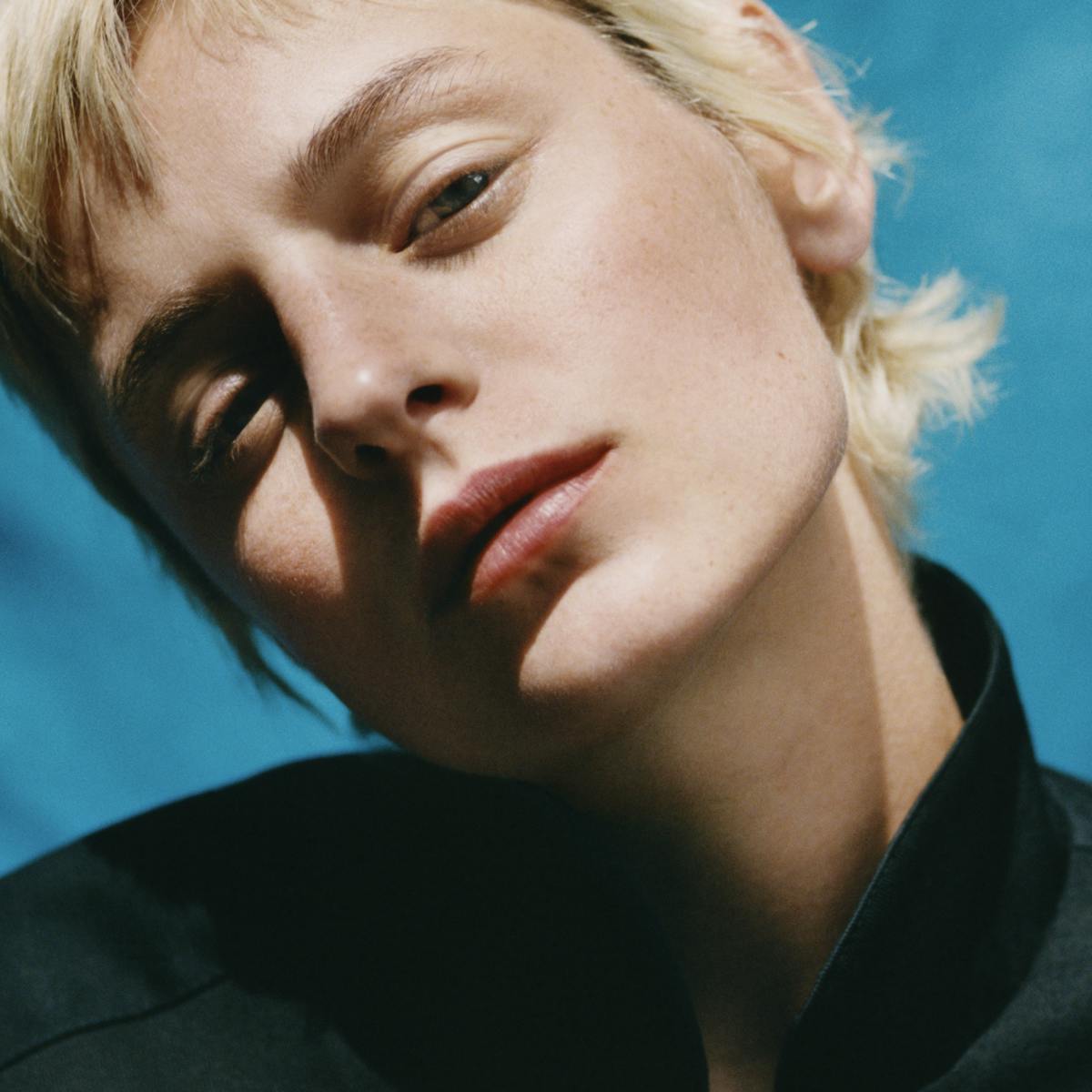How Emma Fryer created a timeless wardrobe for the 1920s-set romance.
On the day that Constance Reid (Emma Corrin) becomes Constance Chatterley, she looks every bit the modernist period bride — resplendent and romantic, draped in yards of columnar, delicate lace that extend down to the stocking-clad ankle. As a photographer stoops to take the young couple’s portrait at the start of the 1920s-set Lady Chatterley’s Lover, it’s easy to imagine the image pasted within the pages of a weathered scrapbook, an artifact of a bygone era. According to costume designer Emma Fryer, however, that spot-on wartime wedding look came from a somewhat unlikely source: British contemporary womenswear brand Needle & Thread.
“Initially, I fitted a dress that was actually a wedding dress that we’d had from the costume house,” Fryer says. “Then I just said, ‘Let’s start looking at contemporary options.’” It was an unconventional creative choice, yet somehow just right for the project. “Emma loved it. We had such fun fitting,” Fryer says.
Fun is at the heart of what drew Fryer to the world of costume design. “I don’t have a background in film and TV, other than my dad loved movies and used to save his weekly money to see a film,” she explains. Fryer credits the “quiet influence” of watching her parents go all out for fancy dress parties as a child. After studying three-dimensional design at Wolverhampton School of Art, she found her way to a London costume house and later the Royal Opera House, where she worked on headdresses and jewelry. She decided to attend the Motley Theatre Design Course to learn more about costume and set design. More than two decades later, her industry credits include Free Fire, The Great, and Fear of Fanny, which earned her a BAFTA nomination.
Director Laure de Clermont-Tonnerre’s Lady Chatterley’s Lover is a period-faithful adaptation of D.H. Lawrence’s novel of the same name. After World War I, the eponymous Lady Chatterley — known as Connie to friends and family — finds herself trapped in a sexless marriage after her husband Clifford (Matthew Duckett) returns from the front lines partially paralyzed. When she begins having an affair with gamekeeper Oliver Mellors (Jack O’Connell), she reaches new peaks of sexual satisfaction but must grapple with how her life and status would be affected if their trysts were to be found out.
“There is a contemporary feel that resonates in society today,” Fryer says of the film’s source material. “In terms of Connie’s journey as a woman, equality, freedom, empowerment . . . those are definitely true to women’s lives today, as much as they were when the book was written.” Lawrence’s novel was famously ahead of its time — to the tune of decades of censorship and obscenity trials around the world.
In the years since the novel has been available to the public in its unexpurgated form, it’s been adapted several times over for film, television, radio, and the stage. “I wanted to come to the project with a new approach,” Fryer says of considering Lady Chatterley’s rich visual history. “With Connie, [we] wanted to open her up and give her this sense of being free, a playfulness.” Much as the themes of Lady Chatterley’s Lover still feel modern, Fryer found that there were ready-to-wear clothing options on sale that captured all of the elements she wanted to incorporate into Connie’s costumes. “Fashion always jumps back to period clothing for either a whole look or a season or details,” she says. “We had such a lovely mix of costume house and contemporary clothing that I bought from the wonderful world of amazing shops in London.”
As Connie falls further into a love affair that challenges tightly-held social mores, her clothing becomes an outward representation of her changing sense of self. “She’s very much tweedy and wooly, and a lot more buttoned up,” says Fryer of the character’s outfits at the start of the film. “Then she meets Mellors for the first time and everything starts to loosen up.” By the time she arrives in Venice, Connie’s clothes are vibrant and fashion-forward, a “complete contrast” to what she was wearing in England.
Beyond crafting costumes that speak to each character’s mindset and personality, Fryer’s wardrobe often had to come off of the characters wearing them — and in a hurry. “That blue broderie anglaise dress, where there’s that whole scene of them in the woods, that was a bit of a gulpy moment. We were like, We’ve only got one of those dresses, oh my God,” she recalls. In order to account for certain costumes being torn during a particularly passionate moment, Fryer says, “It was me being a slightly wise owl about what I was plotting into various scenes, knowing that we had more than one dress to cover the possibility of something being ripped.”
While Connie’s wardrobe reflects her personal journey, the two men in her life — Clifford and Oliver — are less mutable, sartorially speaking. The fabric used to create Clifford’s suiting shifts subtly when he moves from London to the countryside, but otherwise remains fairly fixed. Fryer explains, “He wasn’t an open person, and that had to reflect in the silhouette, the neatness, the collars.”
Meanwhile, Oliver’s costumes were done in varying shades of blue, despite being inspired by workwear of the time. “A lot of that clothing would’ve been, very likely, brown wool and heavier,” Fryer says. “[His] backdrop is the trees, the grass, the flowers. The blue against the green, it gives him a different feel.” One of Oliver’s key pieces, an inky blue chore coat, is the kind of item that’s still in demand among style-conscious men. “Certainly in London, guys love wearing them. [Oliver’s] got a period feel, but he could wear that out and nobody would blink,” she says.
An ongoing conversation between past and present is what makes the story of Lady Chatterley’s Lover still feel alive after all these years — and thanks to Fryer’s masterful costuming, this adaptation pulls off the same balance. “Laure wanted to find a new way of looking at Lady Chatterley’s Lover,” Fryer says of the director’s vision. “I thought, Okay, this will allow me to come in and have a new way of looking at it, too.”














